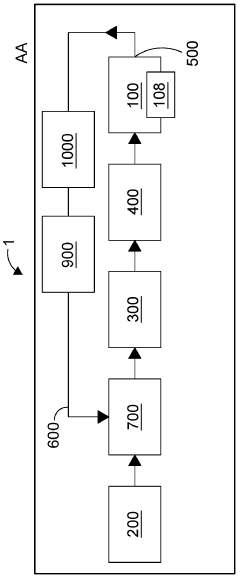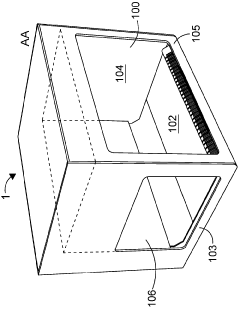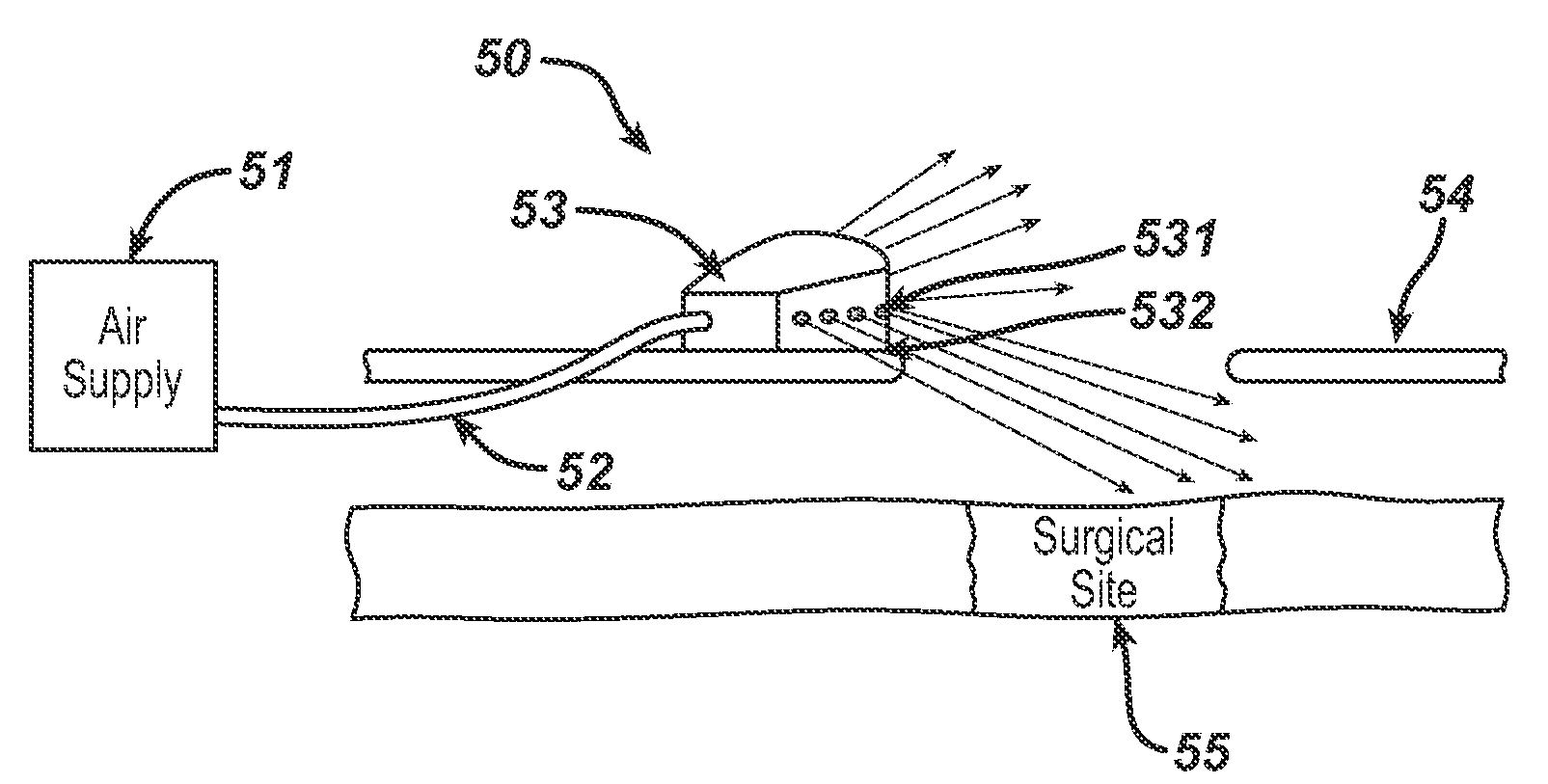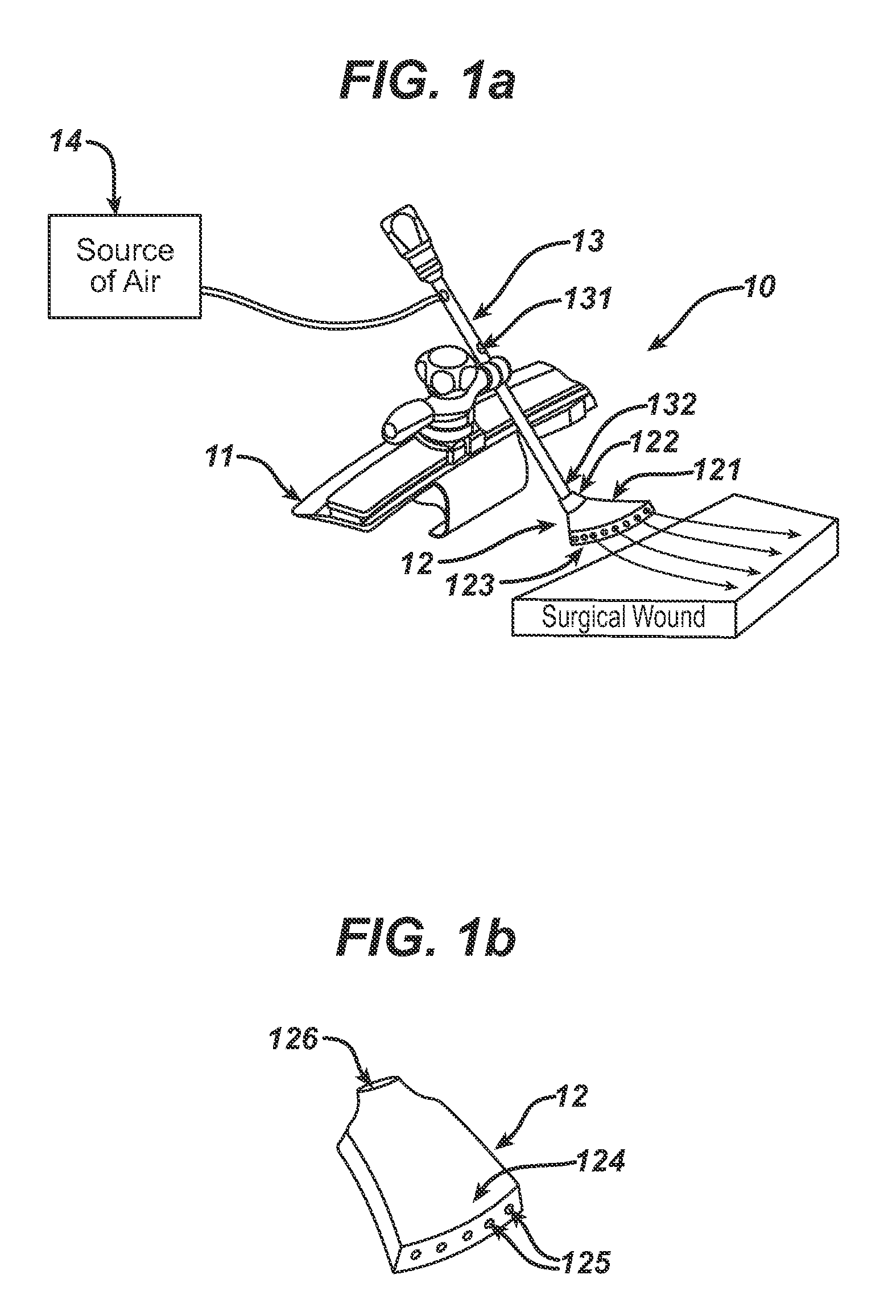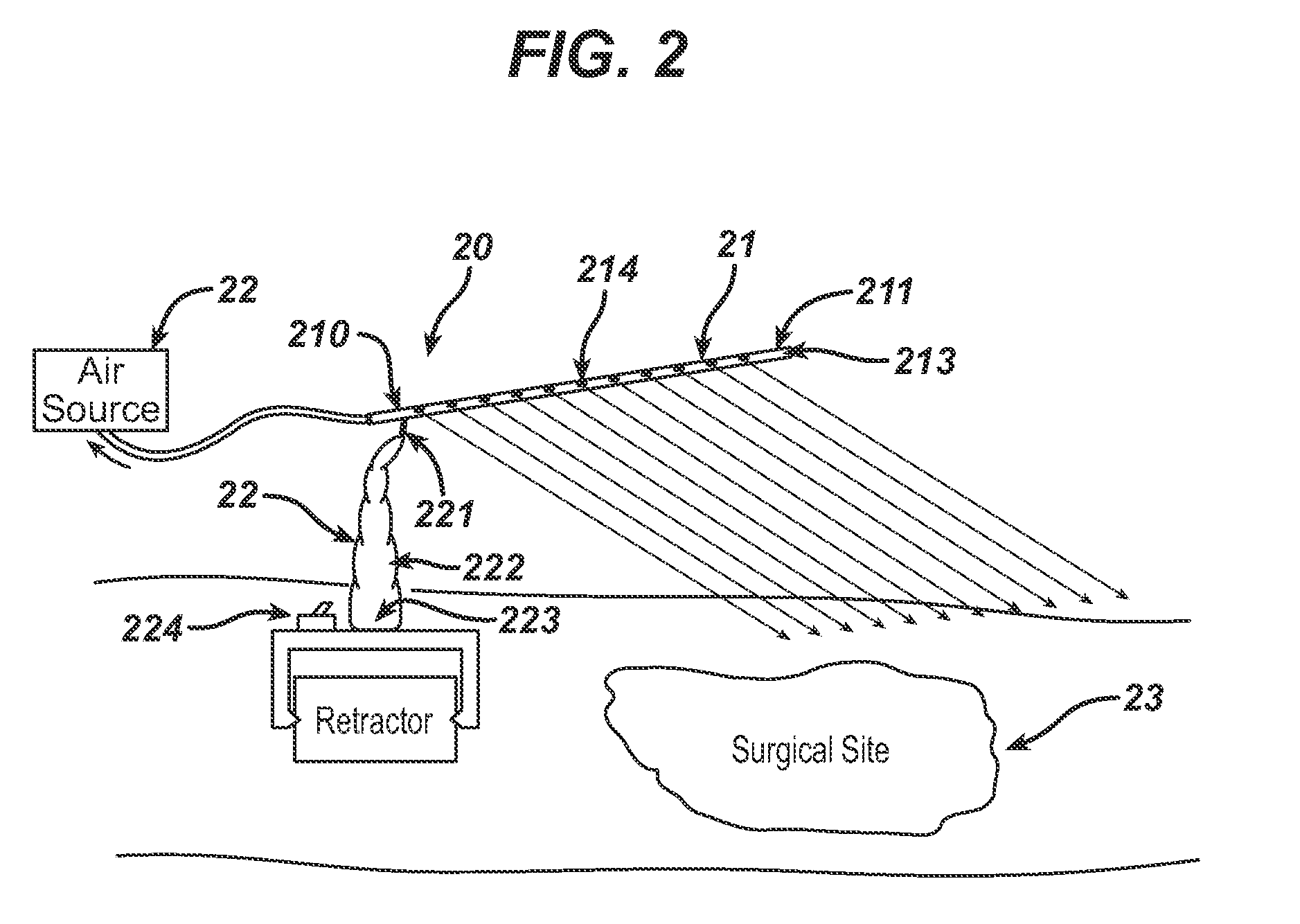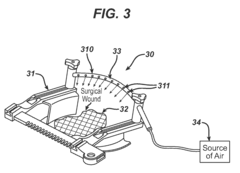Investigating Laminar Flow for Airborne Pathogen Control
JUL 10, 20259 MIN READ
Generate Your Research Report Instantly with AI Agent
Patsnap Eureka helps you evaluate technical feasibility & market potential.
Laminar Flow Tech Background and Objectives
Laminar flow technology has been a cornerstone in controlling airborne pathogens for decades, with its origins tracing back to the mid-20th century. Initially developed for clean room applications in semiconductor manufacturing, the principles of laminar flow have since been adapted for various industries, including healthcare and life sciences. The fundamental concept revolves around creating a unidirectional, low-turbulence airflow that can effectively remove airborne particles and microorganisms from a controlled environment.
The evolution of laminar flow technology has been driven by the increasing need for contamination control in critical environments. As our understanding of airborne pathogen transmission has grown, so too has the sophistication of laminar flow systems. Early designs focused primarily on particle removal, but modern systems incorporate advanced filtration technologies, such as HEPA and ULPA filters, to capture even the smallest microorganisms.
In recent years, the global pandemic has heightened awareness of airborne pathogen control, accelerating research and development in this field. The objectives of current laminar flow technology research are multifaceted, aiming to enhance efficiency, reduce energy consumption, and expand applicability across diverse settings. One key goal is to develop more adaptive systems that can respond dynamically to changing environmental conditions and contamination levels.
Another significant objective is the integration of laminar flow technology with other air purification methods, such as UV-C irradiation and photocatalytic oxidation, to create comprehensive air quality management solutions. Researchers are also exploring ways to optimize laminar flow patterns for specific room geometries and occupancy patterns, ensuring maximum effectiveness in real-world scenarios.
The miniaturization and portability of laminar flow systems represent another important research direction. This aims to bring the benefits of controlled airflow to smaller spaces and mobile applications, potentially revolutionizing personal protective equipment and transportation safety measures.
As we look to the future, the overarching goal of laminar flow technology in airborne pathogen control is to create safer, healthier indoor environments across all aspects of society. This includes not only hospitals and laboratories but also schools, offices, and public transportation. The challenge lies in developing solutions that are both highly effective and economically viable for widespread adoption.
The evolution of laminar flow technology has been driven by the increasing need for contamination control in critical environments. As our understanding of airborne pathogen transmission has grown, so too has the sophistication of laminar flow systems. Early designs focused primarily on particle removal, but modern systems incorporate advanced filtration technologies, such as HEPA and ULPA filters, to capture even the smallest microorganisms.
In recent years, the global pandemic has heightened awareness of airborne pathogen control, accelerating research and development in this field. The objectives of current laminar flow technology research are multifaceted, aiming to enhance efficiency, reduce energy consumption, and expand applicability across diverse settings. One key goal is to develop more adaptive systems that can respond dynamically to changing environmental conditions and contamination levels.
Another significant objective is the integration of laminar flow technology with other air purification methods, such as UV-C irradiation and photocatalytic oxidation, to create comprehensive air quality management solutions. Researchers are also exploring ways to optimize laminar flow patterns for specific room geometries and occupancy patterns, ensuring maximum effectiveness in real-world scenarios.
The miniaturization and portability of laminar flow systems represent another important research direction. This aims to bring the benefits of controlled airflow to smaller spaces and mobile applications, potentially revolutionizing personal protective equipment and transportation safety measures.
As we look to the future, the overarching goal of laminar flow technology in airborne pathogen control is to create safer, healthier indoor environments across all aspects of society. This includes not only hospitals and laboratories but also schools, offices, and public transportation. The challenge lies in developing solutions that are both highly effective and economically viable for widespread adoption.
Market Demand for Pathogen Control Solutions
The market demand for airborne pathogen control solutions has seen a significant surge in recent years, driven by increasing awareness of the health risks associated with airborne diseases and the global impact of pandemics. This heightened concern has led to a growing market for innovative technologies that can effectively mitigate the spread of airborne pathogens in various settings, including healthcare facilities, public spaces, and transportation systems.
The healthcare sector represents a primary market for laminar flow-based pathogen control solutions. Hospitals, clinics, and long-term care facilities are increasingly seeking advanced air purification systems to protect patients, staff, and visitors from hospital-acquired infections. The demand is particularly strong in operating rooms, intensive care units, and isolation wards, where maintaining a sterile environment is crucial for patient outcomes.
Beyond healthcare, there is a growing market in commercial and public spaces. Office buildings, schools, shopping centers, and entertainment venues are exploring ways to improve indoor air quality and reduce the risk of airborne pathogen transmission. This trend has been accelerated by the COVID-19 pandemic, which has heightened public awareness and expectations regarding air quality in shared spaces.
The transportation sector presents another significant market opportunity. Airlines, train operators, and public transit systems are under pressure to ensure passenger safety and restore confidence in travel. Laminar flow technologies that can effectively control airborne pathogens in enclosed, high-traffic environments are in high demand.
Industrial settings, particularly in the food and pharmaceutical industries, also contribute to the market demand. These sectors require stringent contamination control measures to maintain product quality and safety, making them potential adopters of advanced laminar flow solutions.
The market for pathogen control solutions is expected to continue its growth trajectory. Factors driving this trend include stricter regulations on indoor air quality, increasing investment in healthcare infrastructure, and a growing emphasis on workplace health and safety. Additionally, the rise of smart building technologies and the Internet of Things (IoT) is creating opportunities for integrated, sensor-driven air quality management systems that incorporate laminar flow principles.
Consumer awareness and demand for cleaner air in personal spaces are also on the rise, potentially opening new markets for smaller-scale, residential applications of laminar flow technology. This trend is particularly evident in regions with high pollution levels or frequent occurrences of airborne diseases.
As the global focus on health and wellbeing intensifies, the market for effective airborne pathogen control solutions is likely to expand further. Laminar flow technology, with its potential for efficient and targeted air purification, is well-positioned to address this growing demand across various sectors and applications.
The healthcare sector represents a primary market for laminar flow-based pathogen control solutions. Hospitals, clinics, and long-term care facilities are increasingly seeking advanced air purification systems to protect patients, staff, and visitors from hospital-acquired infections. The demand is particularly strong in operating rooms, intensive care units, and isolation wards, where maintaining a sterile environment is crucial for patient outcomes.
Beyond healthcare, there is a growing market in commercial and public spaces. Office buildings, schools, shopping centers, and entertainment venues are exploring ways to improve indoor air quality and reduce the risk of airborne pathogen transmission. This trend has been accelerated by the COVID-19 pandemic, which has heightened public awareness and expectations regarding air quality in shared spaces.
The transportation sector presents another significant market opportunity. Airlines, train operators, and public transit systems are under pressure to ensure passenger safety and restore confidence in travel. Laminar flow technologies that can effectively control airborne pathogens in enclosed, high-traffic environments are in high demand.
Industrial settings, particularly in the food and pharmaceutical industries, also contribute to the market demand. These sectors require stringent contamination control measures to maintain product quality and safety, making them potential adopters of advanced laminar flow solutions.
The market for pathogen control solutions is expected to continue its growth trajectory. Factors driving this trend include stricter regulations on indoor air quality, increasing investment in healthcare infrastructure, and a growing emphasis on workplace health and safety. Additionally, the rise of smart building technologies and the Internet of Things (IoT) is creating opportunities for integrated, sensor-driven air quality management systems that incorporate laminar flow principles.
Consumer awareness and demand for cleaner air in personal spaces are also on the rise, potentially opening new markets for smaller-scale, residential applications of laminar flow technology. This trend is particularly evident in regions with high pollution levels or frequent occurrences of airborne diseases.
As the global focus on health and wellbeing intensifies, the market for effective airborne pathogen control solutions is likely to expand further. Laminar flow technology, with its potential for efficient and targeted air purification, is well-positioned to address this growing demand across various sectors and applications.
Current Challenges in Airborne Pathogen Control
The control of airborne pathogens remains a significant challenge in various settings, including healthcare facilities, public spaces, and transportation systems. Despite advancements in air filtration and disinfection technologies, several obstacles persist in effectively managing the spread of infectious agents through the air.
One of the primary challenges is the dynamic nature of airflow patterns in indoor environments. Conventional ventilation systems often create turbulent air currents, which can inadvertently disperse pathogens rather than containing them. This unpredictable air movement makes it difficult to establish consistent control measures and increases the risk of pathogen transmission across larger areas.
The size and behavior of airborne pathogens also present significant hurdles. Many infectious agents, such as viruses and some bacteria, can remain suspended in air for extended periods due to their microscopic size. These particles can easily bypass traditional filtration systems, necessitating more advanced and often more expensive air purification technologies.
Another critical challenge is the balance between effective pathogen control and energy efficiency. High-performance air filtration and frequent air exchanges can significantly reduce pathogen concentrations but often come at the cost of increased energy consumption. This trade-off becomes particularly problematic in large-scale applications or in regions with limited resources.
The variability in environmental conditions further complicates airborne pathogen control. Factors such as temperature, humidity, and air pressure can significantly influence the survival and transmission of pathogens. Developing control strategies that remain effective across diverse environmental conditions poses a substantial technical challenge.
Moreover, the rapid mutation and adaptation of pathogens necessitate continual updates to control measures. What may be effective against one strain of a virus may prove less effective against its variants, requiring ongoing research and development in pathogen control technologies.
The integration of pathogen control systems with existing infrastructure presents another significant challenge. Retrofitting older buildings with advanced air management systems can be costly and logistically complex, often requiring substantial modifications to existing structures and HVAC systems.
Lastly, there is a growing need for real-time monitoring and response capabilities in airborne pathogen control. Current systems often lack the ability to quickly detect and respond to sudden increases in pathogen levels, leaving a critical gap in rapid containment strategies.
These challenges underscore the complexity of airborne pathogen control and highlight the need for innovative approaches that can address these multifaceted issues effectively and efficiently.
One of the primary challenges is the dynamic nature of airflow patterns in indoor environments. Conventional ventilation systems often create turbulent air currents, which can inadvertently disperse pathogens rather than containing them. This unpredictable air movement makes it difficult to establish consistent control measures and increases the risk of pathogen transmission across larger areas.
The size and behavior of airborne pathogens also present significant hurdles. Many infectious agents, such as viruses and some bacteria, can remain suspended in air for extended periods due to their microscopic size. These particles can easily bypass traditional filtration systems, necessitating more advanced and often more expensive air purification technologies.
Another critical challenge is the balance between effective pathogen control and energy efficiency. High-performance air filtration and frequent air exchanges can significantly reduce pathogen concentrations but often come at the cost of increased energy consumption. This trade-off becomes particularly problematic in large-scale applications or in regions with limited resources.
The variability in environmental conditions further complicates airborne pathogen control. Factors such as temperature, humidity, and air pressure can significantly influence the survival and transmission of pathogens. Developing control strategies that remain effective across diverse environmental conditions poses a substantial technical challenge.
Moreover, the rapid mutation and adaptation of pathogens necessitate continual updates to control measures. What may be effective against one strain of a virus may prove less effective against its variants, requiring ongoing research and development in pathogen control technologies.
The integration of pathogen control systems with existing infrastructure presents another significant challenge. Retrofitting older buildings with advanced air management systems can be costly and logistically complex, often requiring substantial modifications to existing structures and HVAC systems.
Lastly, there is a growing need for real-time monitoring and response capabilities in airborne pathogen control. Current systems often lack the ability to quickly detect and respond to sudden increases in pathogen levels, leaving a critical gap in rapid containment strategies.
These challenges underscore the complexity of airborne pathogen control and highlight the need for innovative approaches that can address these multifaceted issues effectively and efficiently.
Existing Laminar Flow Control Methods
01 Laminar airflow systems for pathogen control
Laminar airflow systems are utilized to create a controlled environment that minimizes the spread of airborne pathogens. These systems generate a unidirectional flow of filtered air, creating a barrier against contaminants and reducing the risk of infection in sensitive areas such as operating rooms or cleanrooms.- Laminar airflow systems for pathogen control: Laminar airflow systems are utilized to create a controlled environment that minimizes the spread of airborne pathogens. These systems generate a unidirectional flow of filtered air, creating a barrier that prevents contamination and reduces the risk of infection transmission in various settings, such as healthcare facilities and clean rooms.
- UV disinfection in laminar flow systems: Integration of UV disinfection technology within laminar flow systems enhances pathogen control. UV light is used to inactivate microorganisms in the air as it passes through the system, providing an additional layer of protection against airborne pathogens while maintaining laminar flow conditions.
- Sensor-based monitoring and control: Advanced sensor technologies are employed to monitor air quality, particle counts, and pathogen levels in real-time. These sensors provide data to control systems that can adjust airflow parameters, filtration efficiency, and disinfection intensity to maintain optimal pathogen control in laminar flow environments.
- Specialized air distribution systems: Innovative air distribution systems are designed to enhance the effectiveness of laminar flow for pathogen control. These systems may include adjustable vents, directional nozzles, or perforated panels that optimize airflow patterns to maximize the removal of airborne contaminants while maintaining laminar conditions.
- Integration with HVAC and filtration systems: Laminar flow pathogen control systems are integrated with existing HVAC infrastructure and advanced filtration technologies. This integration ensures comprehensive air quality management, combining the benefits of laminar flow with high-efficiency particulate air (HEPA) filters and other air purification methods to create a multi-layered approach to airborne pathogen control.
02 UV disinfection in laminar flow systems
Integration of UV light disinfection technology within laminar flow systems enhances pathogen control. UV light is used to inactivate microorganisms in the air stream, providing an additional layer of protection against airborne contaminants while maintaining laminar flow conditions.Expand Specific Solutions03 Sensor-based monitoring and control
Advanced sensor technologies are employed to monitor air quality, particle counts, and pathogen levels in real-time. These sensors provide data for automated control systems to adjust airflow parameters, ensuring optimal pathogen control and maintaining laminar flow conditions.Expand Specific Solutions04 Portable laminar flow devices for localized protection
Portable or mobile laminar flow units are designed for targeted pathogen control in specific areas. These devices create localized clean air zones, offering flexibility in protecting individuals or equipment from airborne contaminants in various settings.Expand Specific Solutions05 Integration of HEPA filtration in laminar flow systems
High-Efficiency Particulate Air (HEPA) filters are incorporated into laminar flow systems to remove a wide range of airborne particles, including pathogens. The combination of HEPA filtration and laminar flow enhances the overall effectiveness of airborne pathogen control in controlled environments.Expand Specific Solutions
Key Players in Air Purification Industry
The investigation of laminar flow for airborne pathogen control is in a developing stage, with increasing market potential due to heightened awareness of indoor air quality. The technology's maturity varies across companies, with aerospace giants like Boeing and Airbus leading in advanced airflow systems. Research institutions such as Southeast University and Beihang University are contributing to fundamental studies. Specialized firms like The Charles Stark Draper Laboratory and Don Whitley Scientific are developing niche applications. While the market is growing, full-scale implementation remains limited, indicating room for innovation and market expansion in this critical area of public health and safety.
The Boeing Co.
Technical Solution: Boeing has developed an advanced laminar flow control system for airborne pathogen mitigation in aircraft cabins. Their solution integrates computational fluid dynamics (CFD) modeling with active flow control technologies. The system uses a network of micro-sensors and actuators embedded in the cabin interior to detect air movement patterns and adjust airflow in real-time. This dynamic approach allows for the creation of "air curtains" that can isolate potential contamination zones and direct pathogens towards high-efficiency particulate air (HEPA) filtration systems[1][3]. Boeing's technology also incorporates UV-C light disinfection within the air circulation system, providing an additional layer of pathogen control[5].
Strengths: Highly adaptive to changing cabin conditions, integrates multiple pathogen control methods. Weaknesses: Complex system with potential high implementation and maintenance costs.
Airbus Operations Ltd.
Technical Solution: Airbus has pioneered a laminar flow control system called BLADE (Breakthrough Laminar Aircraft Demonstrator in Europe) for pathogen control in aircraft. While initially developed for fuel efficiency, this technology has been adapted for cabin air quality management. The system utilizes a combination of passive and active flow control techniques, including surface suction and microfiber actuators, to maintain laminar flow over larger portions of the aircraft interior[2]. For pathogen control, Airbus has integrated this technology with their HEPA filtration systems and introduced a novel air circulation pattern that moves from ceiling to floor, reducing horizontal air movement and potential pathogen spread[4]. The company has also implemented AI-driven predictive models to optimize airflow based on passenger density and movement patterns[6].
Strengths: Builds on existing laminar flow technology, potentially more energy-efficient. Weaknesses: May require significant modifications to existing aircraft designs for full implementation.
Core Innovations in Pathogen Filtration
Workstation
PatentActiveGB2593277A
Innovation
- A workstation with a sealed working chamber that utilizes a purified controlled atmosphere with a laminar flow, which is purified by a filter and formed into a smooth, unidirectional flow by a laminar flow device, creating a sterile and controlled environment through continuous recirculation and adaptive control of the atmosphere's flow rate.
System and method for reducing surgical site infection
PatentInactiveUS20100234794A1
Innovation
- A system comprising a manifold attached to a surgical site that directs filtered air directly over the site using a shaft and blower, potentially incorporating anti-microbial agents or UV/blue light to prevent airborne pathogens from contaminating the surgical site.
Regulatory Framework for Air Quality Control
The regulatory framework for air quality control plays a crucial role in the investigation of laminar flow for airborne pathogen control. Governments and international organizations have established comprehensive guidelines and standards to ensure indoor air quality and minimize the risk of airborne disease transmission.
At the global level, the World Health Organization (WHO) provides recommendations for indoor air quality, including specific guidelines for healthcare facilities. These guidelines emphasize the importance of proper ventilation and air filtration systems in reducing the spread of airborne pathogens. The WHO also collaborates with national health authorities to develop and implement air quality control measures tailored to local conditions and needs.
In the United States, the Environmental Protection Agency (EPA) sets national ambient air quality standards (NAAQS) that indirectly influence indoor air quality. The Occupational Safety and Health Administration (OSHA) establishes workplace air quality standards, including regulations for ventilation systems and airborne contaminant control. Additionally, the Centers for Disease Control and Prevention (CDC) provides guidelines for infection control in healthcare settings, which include recommendations for air handling and ventilation systems.
The European Union has implemented the Indoor Air Quality Directive, which sets standards for various pollutants and requires member states to monitor and improve indoor air quality. This directive also addresses the need for proper ventilation and air filtration systems in public buildings and healthcare facilities.
Many countries have developed their own regulatory frameworks for air quality control. For example, Japan's Ministry of Health, Labour and Welfare has established guidelines for indoor air quality, including specific requirements for healthcare facilities. Similarly, Singapore's National Environment Agency enforces strict air quality standards and provides guidelines for building ventilation systems.
In the context of laminar flow for airborne pathogen control, regulatory bodies often require healthcare facilities to implement specific air handling and filtration systems. These regulations may include requirements for air changes per hour, pressure differentials between rooms, and the use of high-efficiency particulate air (HEPA) filters. Some jurisdictions also mandate regular testing and maintenance of ventilation systems to ensure their effectiveness in controlling airborne pathogens.
As research on laminar flow and airborne pathogen control progresses, regulatory frameworks are likely to evolve. Policymakers and regulatory bodies will need to stay informed about the latest scientific findings and technological advancements to ensure that air quality control regulations remain effective and up-to-date.
At the global level, the World Health Organization (WHO) provides recommendations for indoor air quality, including specific guidelines for healthcare facilities. These guidelines emphasize the importance of proper ventilation and air filtration systems in reducing the spread of airborne pathogens. The WHO also collaborates with national health authorities to develop and implement air quality control measures tailored to local conditions and needs.
In the United States, the Environmental Protection Agency (EPA) sets national ambient air quality standards (NAAQS) that indirectly influence indoor air quality. The Occupational Safety and Health Administration (OSHA) establishes workplace air quality standards, including regulations for ventilation systems and airborne contaminant control. Additionally, the Centers for Disease Control and Prevention (CDC) provides guidelines for infection control in healthcare settings, which include recommendations for air handling and ventilation systems.
The European Union has implemented the Indoor Air Quality Directive, which sets standards for various pollutants and requires member states to monitor and improve indoor air quality. This directive also addresses the need for proper ventilation and air filtration systems in public buildings and healthcare facilities.
Many countries have developed their own regulatory frameworks for air quality control. For example, Japan's Ministry of Health, Labour and Welfare has established guidelines for indoor air quality, including specific requirements for healthcare facilities. Similarly, Singapore's National Environment Agency enforces strict air quality standards and provides guidelines for building ventilation systems.
In the context of laminar flow for airborne pathogen control, regulatory bodies often require healthcare facilities to implement specific air handling and filtration systems. These regulations may include requirements for air changes per hour, pressure differentials between rooms, and the use of high-efficiency particulate air (HEPA) filters. Some jurisdictions also mandate regular testing and maintenance of ventilation systems to ensure their effectiveness in controlling airborne pathogens.
As research on laminar flow and airborne pathogen control progresses, regulatory frameworks are likely to evolve. Policymakers and regulatory bodies will need to stay informed about the latest scientific findings and technological advancements to ensure that air quality control regulations remain effective and up-to-date.
Environmental Impact of Laminar Flow Systems
Laminar flow systems, while effective in controlling airborne pathogens, have significant environmental implications that warrant careful consideration. The energy consumption of these systems is a primary concern. To maintain a consistent laminar flow, substantial amounts of electricity are required to power fans and air handling units continuously. This increased energy demand contributes to higher greenhouse gas emissions, particularly in regions where electricity generation relies heavily on fossil fuels.
The filtration systems used in laminar flow setups also have environmental consequences. High-efficiency particulate air (HEPA) filters, commonly employed in these systems, require frequent replacement to maintain optimal performance. The disposal of used filters, which may contain trapped pathogens and other contaminants, presents a waste management challenge. Proper disposal protocols must be implemented to prevent potential environmental contamination.
Furthermore, the materials used in constructing laminar flow systems, such as specialized plastics and metals, have their own environmental footprint. The production, transportation, and eventual disposal of these materials contribute to resource depletion and potential pollution if not managed responsibly.
The use of chemical disinfectants in conjunction with laminar flow systems also raises environmental concerns. These substances, while effective in pathogen control, can have adverse effects on air and water quality if not properly handled and disposed of. Some disinfectants may contribute to the formation of harmful byproducts or persist in the environment, potentially affecting ecosystems.
On a broader scale, the widespread adoption of laminar flow systems could lead to increased indoor air conditioning requirements. This shift towards more tightly controlled indoor environments may result in a disconnection from natural ventilation methods, potentially increasing overall energy consumption in buildings and contributing to the urban heat island effect.
However, it's important to note that laminar flow systems also offer potential environmental benefits. By effectively controlling airborne pathogens, these systems can reduce the spread of diseases, potentially decreasing the need for pharmaceutical interventions and their associated environmental impacts. Additionally, the precise control of air flow can lead to more efficient heating and cooling in certain applications, potentially offsetting some of the energy consumption concerns.
The filtration systems used in laminar flow setups also have environmental consequences. High-efficiency particulate air (HEPA) filters, commonly employed in these systems, require frequent replacement to maintain optimal performance. The disposal of used filters, which may contain trapped pathogens and other contaminants, presents a waste management challenge. Proper disposal protocols must be implemented to prevent potential environmental contamination.
Furthermore, the materials used in constructing laminar flow systems, such as specialized plastics and metals, have their own environmental footprint. The production, transportation, and eventual disposal of these materials contribute to resource depletion and potential pollution if not managed responsibly.
The use of chemical disinfectants in conjunction with laminar flow systems also raises environmental concerns. These substances, while effective in pathogen control, can have adverse effects on air and water quality if not properly handled and disposed of. Some disinfectants may contribute to the formation of harmful byproducts or persist in the environment, potentially affecting ecosystems.
On a broader scale, the widespread adoption of laminar flow systems could lead to increased indoor air conditioning requirements. This shift towards more tightly controlled indoor environments may result in a disconnection from natural ventilation methods, potentially increasing overall energy consumption in buildings and contributing to the urban heat island effect.
However, it's important to note that laminar flow systems also offer potential environmental benefits. By effectively controlling airborne pathogens, these systems can reduce the spread of diseases, potentially decreasing the need for pharmaceutical interventions and their associated environmental impacts. Additionally, the precise control of air flow can lead to more efficient heating and cooling in certain applications, potentially offsetting some of the energy consumption concerns.
Unlock deeper insights with Patsnap Eureka Quick Research — get a full tech report to explore trends and direct your research. Try now!
Generate Your Research Report Instantly with AI Agent
Supercharge your innovation with Patsnap Eureka AI Agent Platform!


